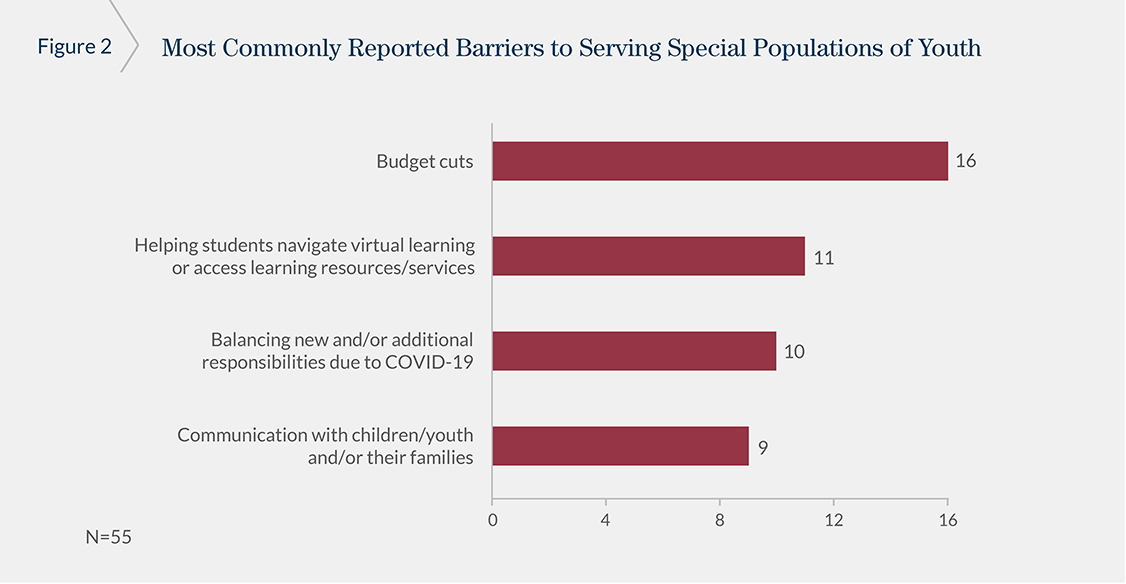As education leaders plan for the fall, they face increased costs to meet pandemic mitigation guidelines and simultaneous reduced budgets. This seems like an impossible proposition, but the concept of targeted universalism can help.
Targeted universalism is a way to develop strategies that help all groups reach a shared or universal goal through a deep focus on equity when choosing and designing interventions and in understanding progress and outcomes. The concept emerged from collaborations between researchers john a powell, Angela Blackwell, and Manuel Pastor, who studied urban policy solutions that focused solely on cities while ignoring surrounding and interconnected suburbs.
Targeted universal strategies typically start with a focus on deeply understanding and addressing challenges for group members on the margins (e.g., students with disabilities who are severely under- or over-performing compared to the average) and then designing solutions that meet their needs — but which are then applied to all members of the group (e.g., all students with disabilities) and sometimes an entire population (e.g., all students). The example commonly used to illustrate targeted universalism is of curb cuts, the ramps cut from the top of a sidewalk down to the adjoining street. While originally designed and promoted by advocates in wheelchairs, curb cuts ultimately benefited the majority of pedestrians who use curb cuts for strollers, carts, bikes, and simple convenience. (One architect found that 90% of unencumbered pedestrians went out of their way to use a curb cut in a shopping mall).
In the world of education, this could look like focusing on those for whom COVID-related learning losses are greatest: those who are economically disadvantaged, English language learners, students with disabilities, youth in foster care, those involved with the juvenile justice system, or young people experiencing homelessness. A recent survey from NWEA projects that students will return to school in the fall with only 70% of a typical year of learning in ELA and 50% in math, and the effect is likely more significant for traditionally underserved students. To address the needs of those most affected by school closures, education leaders must consider the unique challenges and assets of these students and their families. For example, leaders must figure out how to ensure all students have educational resources. Schools with limited funds to purchase student devices can provide students with printed materials. This in turn can support homeless students who may not have a reliable source of power to charge devices and students with disabilities preventing extended computer use.
Examples of targeted universalism already exist in education. For instance, the U.S. Department of Education encourages schools to support students experiencing homelessness by offering a comprehensive approach, which includes providing a stable, nurturing, and personalized school environment in addition to academic supports and interventions. While the non-academic supports help serve the acute needs of this particular group of students, research shows that all students can and do benefit from this kind of comprehensive approach to education.
Seattle Public Schools offers another example. Their 2024 Strategic Plan sets a universal goal that “every student receives a high-quality, world-class education and graduates prepared for college, career, and community.” To better serve African American males, who are furthest from achieving the goal, the district will refine systems and structures (e.g., establishing high expectations, providing social-emotional supports, increasing teacher retention), which will ultimately benefit the entire student body.

In our recent survey of leaders in systems of care across the country, respondents spoke to the most significant barriers they and their students face (see figure above) and what states and districts might do to support them during this crisis. The results of this survey — combined with a targeted universalism approach — suggest that focusing on students whose educations are most disrupted may simultaneously improve systems for all students.
A primer on targeted universalism from the Othering & Belonging Institute suggests a basic five-step process for implementing this policy approach:
- Establish a universal goal based upon a broadly shared recognition of a societal problem and collective aspirations
- Assess average performance of the population relative to the universal goal
- Identify groups and regions that are performing differently with respect to the goal; ensure groups are disaggregated
- Understand assets, barriers, and lack of opportunity that support or impede each group or community from achieving the universal goal
- Develop & implement targeted strategies for each group to reach the universal goal
While we cannot predict how COVID-19 will progress, we do know that schools must address the needs of our most vulnerable students in order to reverse the achievement gap this pandemic has exacerbated. Systems and interventions targeting the most underserved students could, in turn, help all students with similar, but less pronounced, needs.
